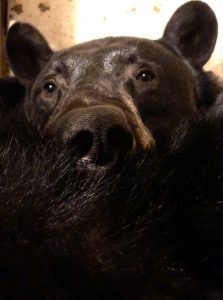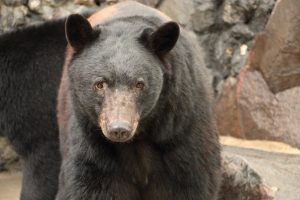American Crow (Corvus brachyrhynchos)
Taxonomy
Kingdom: Animalia
Phylum: Chordata
Class: Aves
Order: Passeriformes
Family: Corvidae
Genus: Corvus
Species: Corvus brachyrhynchos
Conservation Status in Idaho
Least Concern
US Migratory Bird Act
Protected
Range and Habitat
American crows are widely distributed over much of North America. Crows in the northern parts of their range migrate southward and generally winter south of the Canada-US border.
Physical Features
American crows are relatively large uniformly black birds. They have a heavy straight black bill, black feet and legs, brown eyes, and the nasal openings are covered with stiff bristle-like feathers. The tail is either rounded or squared at the tip. Both sexes are similar with the female being slightly smaller.
Weight: 0.7–1.3 lbs (316–575 g)
Length: 1.4–1.7 ft (43–53 cm)
Wingspan: 2.8–3.3 ft (85–100 cm)
Diet
Opportunistic feeder where the diet primarily consists of invertebrates. The diet does include seeds, fruit, amphibians, reptiles, small birds and mammals, carrion, fish, crabs, and gastropods.
Lifespan
14 years in the wild and slightly longer in captivity.
Reproduction
American crows are monogamous cooperative breeders. The mated pair form large families from several breeding seasons that remain together for many years. The family assists in rearing and defending the area’s new nestlings. Most do not leave the area to breed for up to five years. Nesting and incubation can start as early as April with three-six eggs laid and hatched after 18 days. The young are fledged around 36 days after hatching.
Social Behavior and Interaction
American crows are highly social birds. In addition to the large family groups crows form winter roosts sometimes numbering in the hundreds of thousands. American crows work together to harass and drive off predators, known as mobbing. They are extremely intelligent and are excellent problem solvers, function in large social groups, and capable of finding and using unusual food sources. American crows are highly vocal and unlike other songbirds, male and female have the same songs. They have a complex system of caws that include loud repetitive caws, shorter sharp caws for alerts, longer territorial caws, double caws calling groups together, and a large variety of soft calls used in the family groups and as greeting signals.
Major Threats
There are no major threats to the American Crow.


